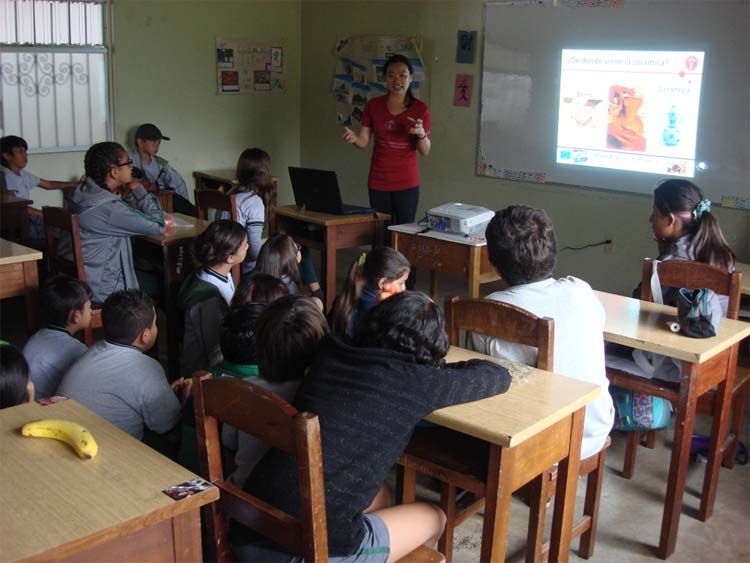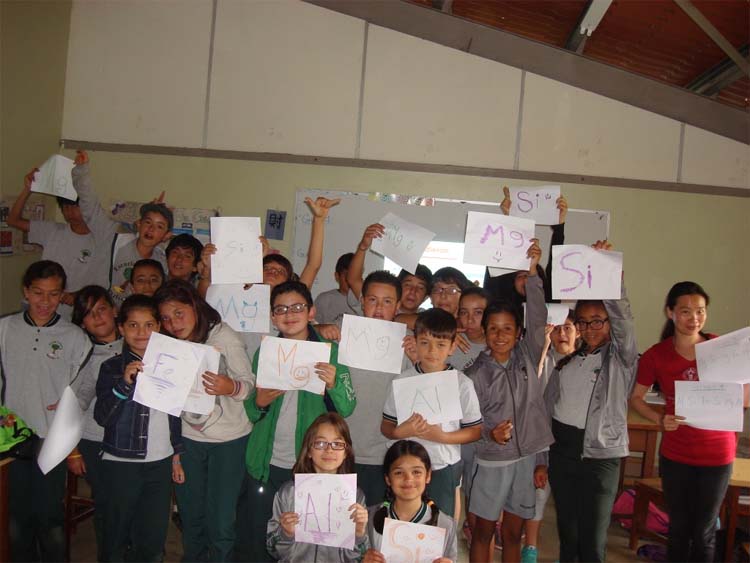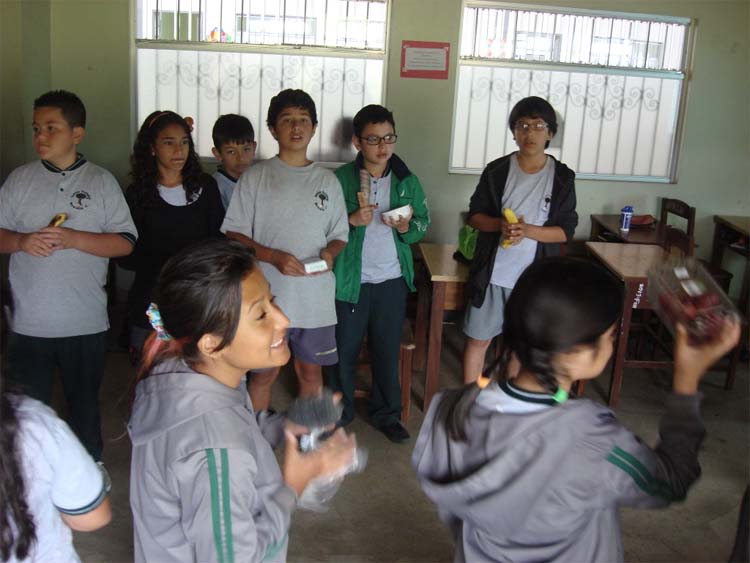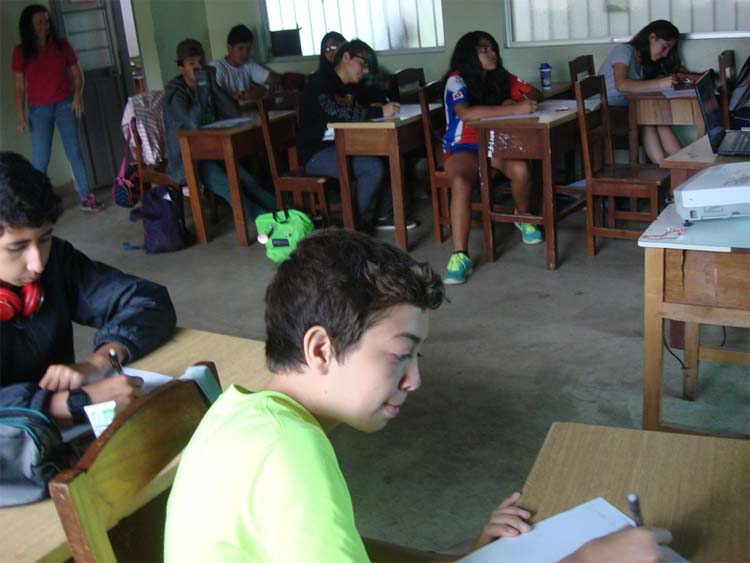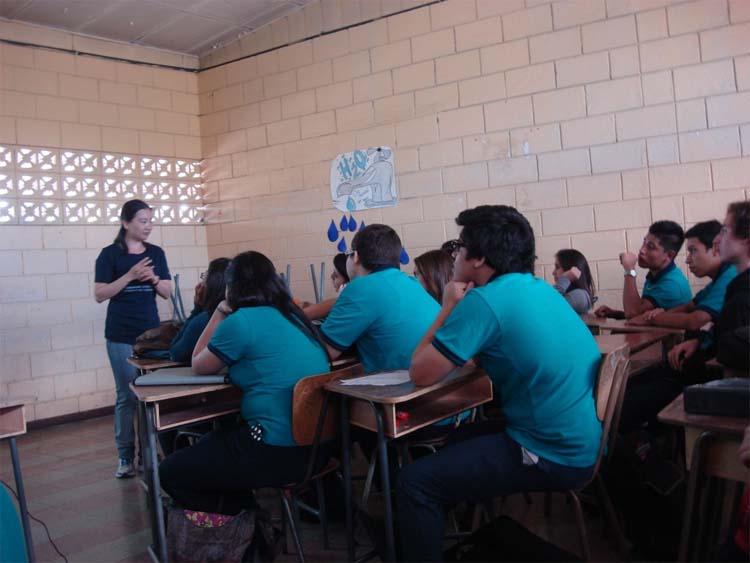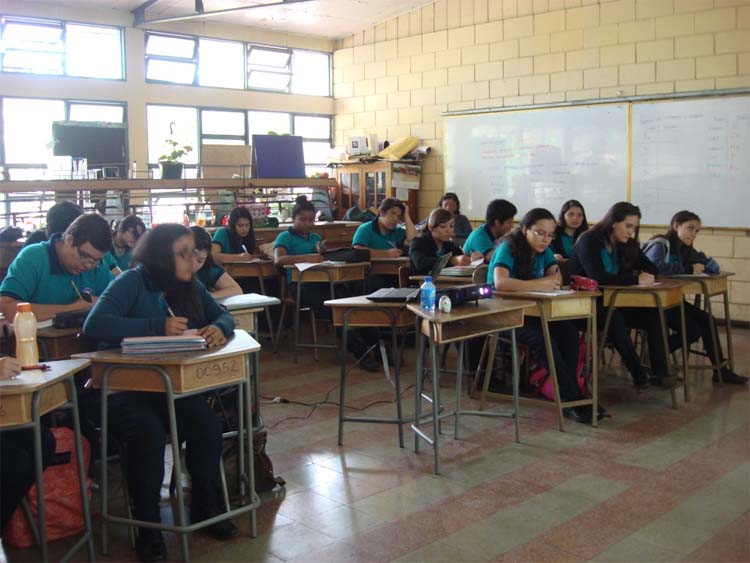Tiny world of ceramics
During a visit home to Costa Rica in April 2015, MINSC fellow Biyun Zhen Wu organised outeach activities at several schools in her home town.
Students from 5th to 11th grades in private and public schools in Costa Rica learnt about the chemical composition and crystal structure of clay minerals. The raw material used for ceramics contains primarily clay minerals, whose crystal structure is based mainly on elements such as oxygen, aluminium, silicon, iron and magnesium, among others. The crystal structure of the clay mineral is arranged in layers with diversity of elements that can be responsible for the physical properties of the ceramics, such as colour and hardness.
For the group of students from 5th and 6th grades, Biyun asked them to bring food or materials which contain high amounts of one of the base elements of the clay mineral. So, first, they learnt the chemical formula and name of the element and associated it with a fruit or material. Afterwards, they formed a layer of the crystal structure using the fruits or materials. Then, they were divided into many groups.
Each group created a layer as the basis for the crystal structure. Finally, they associated the composition and the crystal structure with the physical properties of the ceramics, for example white ceramics are based on kaolinite that contains mainly silicon and aluminium.
For the group of students from 7th, 8th and 11th grades, a combination of presentations and interactive activities were done with the students. The students learnt chemical elements with daily, common food or materials. Below are pictures of the two activities done at the Braulio Carrillo School and two activities at the Liceo Rodrigo Facio Brenes High School in San José, Costa Rica.
Below are some photos from the various activities:
|
|
|
|
|
|
